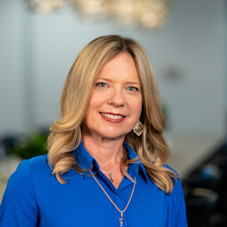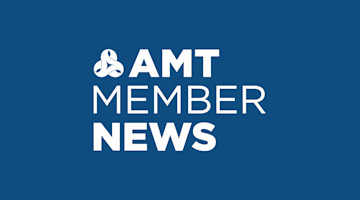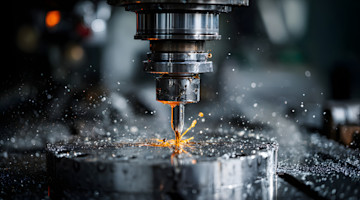Sparks flew. Dr. Sharon Cobb’s first visit to the foundry where her father worked was captivating and inspired her to pursue studies and a career in science.
Now the associate program manager of NASA’s Space Launch System (SLS) at Marshall Space Flight Center in Huntsville, Alabama, Cobb has 38 years of experience with NASA and has done pioneering research in the world of material science, including projects looking at how materials react and interact in zero gravity.
“I always wanted to understand how things worked,” Cobb recalled. “One day, my dad took me to family day at the steel mill. I was in awe. There were these massive crucibles of metal being poured into molds. I could smell the metal and feel the heat. It was such an intense experience, and I was hooked.”
Fueling a Vision
A few years later, a guidance counselor recommended that the young Cobb, who excelled in both math and science, attend engineering open houses at nearby colleges. When she walked into the materials department at the University of Alabama – Birmingham, she knew she found her calling.
“They showed us so many different things about how materials react and interact. It just really connected with me. What they could do with metals and chemicals felt like magic,” Cobb noted.
After earning her Ph.D. in material science and engineering, Cobb began her NASA career in 1986 as a senior research scientist. Her first project was studying the effects of reduced gravity on a variety of complex semiconductor materials.
Joining NASA was a dream come true for the young engineer, and Cobb quickly immersed herself in her research. Along the way, she was encouraged by supportive managers and bolstered by the women who went before her.
“I was doing physics research, and there were not a lot of women in the field at the time, but I wasn’t alone,” Cobb recalled. “It was such a fabulous time to be at NASA. We were going through a period of rich scientific discovery. There were also female role models for the first time. There were already some groundbreaking women working at NASA, and they were doing amazing things.”
Collaboration and Combustion
Cobb joined the SLS program in 2012 and worked her way up to associate program manager. She is now the third-ranking manager within the office.
NASA’s SLS is a super heavy-lift rocket that provides the foundation for human exploration beyond Earth’s orbit. With its unprecedented capabilities, SLS is the only rocket that can send NASA’s Orion spacecraft, four astronauts, and large cargo directly to the moon on a single mission. The SLS rocket is designed to be evolvable, which makes it possible to increase its capability to fly more types of missions, including human missions to the Moon and Mars.
When Artemis I launched for the first time in November 2022, Cobb and the thousands of people who contributed to the mission celebrated.
“Seeing that rocket light up the sky was truly indescribable. There was a realization that we were making history and opening doors to the universe for future generations,” she said. “I had been involved in the creation of the rocket from preliminary designs through development, assembly, and testing for 10 years prior to launch day. It was such an honor to be a part of something that really was the culmination of an entire nation working together.”
The Artemis missions will lay the foundation for space exploration and discovery for generations to come, Cobb explained. “That’s a career highlight that will be hard to top,” she concluded. But that doesn’t stop her and her team from trying.
“Our ultimate goal is to have humans live and work on the moon. That’s a huge endeavor. I want to see humans walking on the moon tomorrow. I want to inspire the next generation of Americans in the same way that earlier space missions inspired me,” she said.
A Slow Burn
While her passion remains unchecked, Cobb has learned to temper it with patience over the years. Enormous endeavors like space missions take an immense amount of time, money, and effort and have so many diverse and complex parts and systems. For instance, by her count, there were components built for the Artemis mission in all 50 states. This was truly a national and international endeavor, with contributions also made by many European nations.
Artemis II and III are slated to be crewed missions, first in orbit and then landing on the moon. “The crewed missions will really ignite people’s imaginations and show them that this is a long-term generational program that will drive our children’s future and their children’s future,” said Cobb.
Part of that drive to inspire future generations comes from Cobb’s own memories of feeling inspired by her supervisors and co-workers throughout her tenure at NASA.
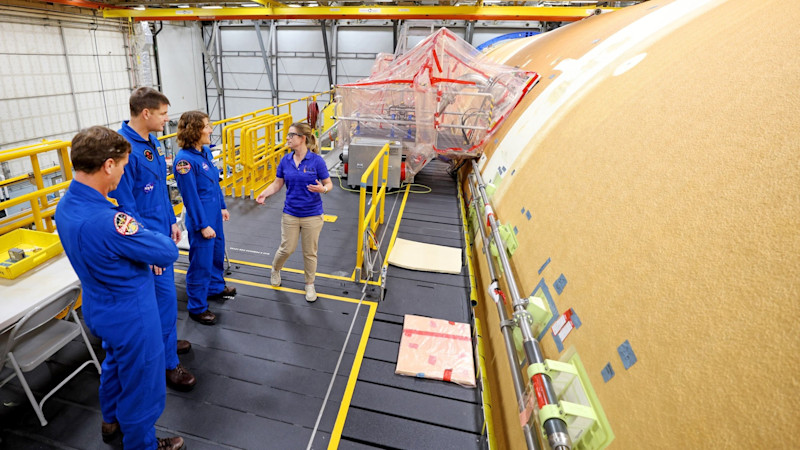
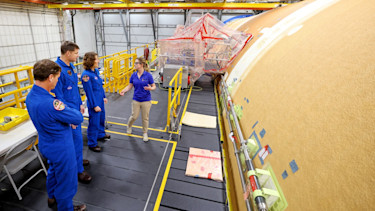
Artemis II NASA astronauts Reid Wiseman and Christina Koch of NASA and CSA (Canadian Space Agency) astronaut Jeremy Hansen view the core stage for the SLS (Space Launch System) rocket at the agency’s Michoud Assembly Facility in New Orleans.
Forging a Path Forward
During her research, Cobb had the chance to work with Dr. Bonnie Dunbar, a mission specialist who flew five missions.
Cobb remembers her as kind and engaging. “I was so impressed by what she was achieving and the doors she was opening for other female astronauts. It was so encouraging to witness firsthand,” she recalled.
Having transitioned into the role of mentor at this stage in her career, Cobb advises young women to keep an open mind as they explore STEM fields. She emphasizes the importance of recruiting women to all types of positions in STEM – not just as engineers. She also notes that as more women move into the field and young girls can see examples that look like them, they will be more likely to choose a STEM path.
“I think women need to keep their career options open,” Cobb advised. “Try different aspects of STEM careers. Take different entry-level courses to explore what you are interested in. That is how you find something that is a good fit for you.”


Sharon Cobb speaks at the IMTS ELEVATE Women Make Manufacturing Move breakfast. Her keynote address focused on how women are integral to the mission to put people back on the moon.
Blazing a Trail
Once a fire is started, it is hard to put out – especially if inspiring peers and incredible accomplishments feed into it. When Cobb saw sparks at the foundry where her father worked, she didn’t know she’d end up working on the next generation of space exploration, but she did know that something shifted – that she had found her place.
As she continues to work with her team to get humans on the moon and Mars, she knows better than anyone that those are milestones – not finish lines. “The sky isn’t the limit. Beyond the sky, there is space. There is just no limit – no limit at all to what you can do,” she said.
While nearly four decades have passed since science first sparked her interest and ignited her dreams, Cobb’s steadfast dedication to her field still crackles with energy. It is only matched by her enthusiasm, which will hopefully spread to younger generations of manufacturers and scientists – and with them into the bright expanse of space.
Building Life in Space
When you are planning to live and work in space, it is important to have the right materials and tools at hand. Additive manufacturing is essential to the modern aerospace industry, and it will be an indispensable technology once astronauts start manufacturing in space.
Dr. Sharon Cobb, associate program manager at NASA’s Space Launch System (SLS), explained that additive manufacturing has already helped simplify the building of engine components and other key pieces of the SLS.
“I know in the case of one particular complex part, we were able to go from 124 welds to four because we shifted to 3D printed parts,” she said. “The reduction in cost that we get from implementing efficiencies like that are the wave of the future, so we continue to infuse technology into our designs and look for new ways to leverage technology.”
Additive manufacturing will also allow astronauts to print parts, fix equipment, and even construct habitats in situ – while living in space. Instead of having to take huge parts or heavy equipment with them during space travel, astronauts can simply take a 3D printer and feed stock or use feed stock created from naturally occurring materials. This has the potential to save time and resources and extend the options for long-term lunar habitation.
To learn more about all the exciting developments in additive manufacturing, plan to attend the new Formnext Chicago expo on April 8-10, 2025, in Chicago. AMT – The Association For Manufacturing Technology is partnering with industry and trade show leaders to showcase the entire additive manufacturing value chain, including materials, design and control software, production, post-production equipment, service providers, and metrology. For more information, visit formnextchicago.com.
To read the rest of the Space Issue of MT Magazine, click here.

